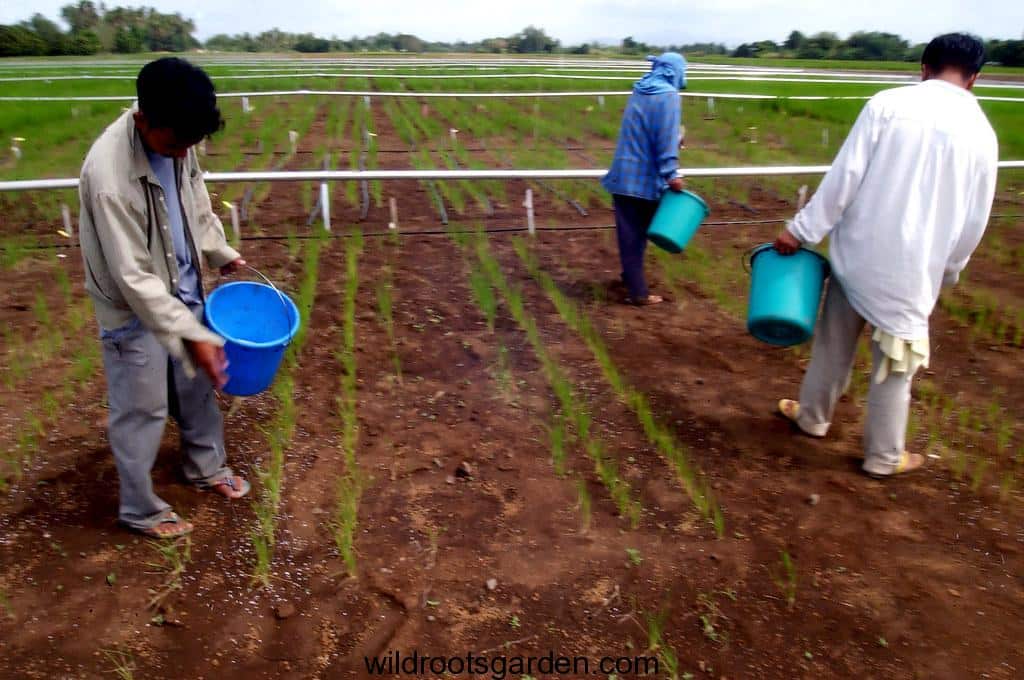Best Fertilizer for Your Tomato and Pepper: Tomatoes and peppers require specific fertilizers for optimal growth. This guide simplifies the process of selecting the right one to ensure a successful harvest.

JUMP TO TOPIC
- 1 Best Fertilizer for Your Tomato and Pepper: Understanding N-P-K: The Nutrient Trio
- 2 Stage-Specific Needs: Tailoring the Diet
- 3 Organic vs. Synthetic Fertilizers: Weighing the Options
- 4 Beyond the Numbers: Additional Factors to Consider
- 5 Top Choices for Tomato and Pepper Power
- 6 FAQs About Best Fertilizer for Your Tomato and Pepper
Best Fertilizer for Your Tomato and Pepper: Understanding N-P-K: The Nutrient Trio
First, let’s crack the N-P-K code. These letters stand for nitrogen (N), phosphorus (P), and potassium (K), the essential nutrients fueling plant growth. Each plays a specific role:
- Nitrogen: Promotes leafy green growth, crucial for early stages.
- Phosphorus: Encourages strong root development and fruit production.
- Potassium: Builds resilience against disease and boosts fruit quality.
Stage-Specific Needs: Tailoring the Diet
Just like humans, tomatoes and peppers have changing nutritional needs throughout their growing season:
- Seedlings: Focus on balanced fertilizers with equal parts N-P-K (like 10-10-10) to encourage overall growth.
- Vegetative Stage: Slightly higher nitrogen levels (like 14-10-10) promote healthy foliage and strong stems.
- Flowering and Fruiting: Up the phosphorus and potassium, like a 5-10-15 ratio, to boost flower formation and juicy, flavorful fruits.
Organic vs. Synthetic Fertilizers: Weighing the Options

The fertilizer world presents two main paths: organic and synthetic. Let’s explore the pros and cons of each:
Organic:
- Pros: Gentle on soil life, improves long-term soil health, environmentally friendly.
- Cons: Slower release of nutrients, may require more frequent application.
Synthetic:
- Pros: Faster acting, readily available nutrients, often more affordable.
- Cons: Can harm beneficial soil microbes, over-fertilization risk, potential environmental impact.
Beyond the Numbers: Additional Factors to Consider

Choosing the ideal fertilizer goes beyond N-P-K ratios:
- Soil Health: Test your soil to understand its existing nutrient levels and pH. Amend accordingly for optimal plant performance.
- Potting Soil: Pre-mixed soils may already contain some nutrients.
- Watering Practices: Proper watering ensures efficient nutrient uptake.
Top Choices for Tomato and Pepper Power
Now, let’s explore some fertilizer options proven to please your tomato and pepper plants:
- Compost: Organic gold, providing a slow-release blend of nutrients, improving soil structure, and fostering beneficial microbes.
- Fish Emulsion: Organic, nitrogen-rich fertilizer promoting foliage growth and boosting overall plant health.
- Bone Meal: Organic source of phosphorus, ideal for boosting flower and fruit production.
- Tomato and Pepper-Specific Fertilizers: Formulated with the specific needs of these plants in mind, often balanced with a focus on phosphorus and potassium.
Remember: Always follow application instructions on fertilizer labels and avoid over-fertilizing, which can harm your plants.
FAQs About Best Fertilizer for Your Tomato and Pepper
Do tomatoes and peppers need the same fertilizer?
While they share similar needs, slight adjustments are beneficial. Both favor balanced N-P-K ratios during seedling and vegetative stages. However, during flowering and fruiting, peppers benefit from slightly higher phosphorus and potassium, like a 5-10-15 ratio, compared to tomatoes which might prefer a balanced 10-10-10.
Organic vs. synthetic fertilizers: Which should I choose?
It depends on your preferences and soil health. Organic fertilizers, like compost and fish emulsion, are gentler on soil life and improve long-term health but release nutrients slowly. Synthetics provide fast-acting nutrients and are often more affordable but can harm beneficial microbes and pose environmental risks. Consider soil tests and your commitment to long-term sustainability.
How often should I fertilize my tomato and pepper plants?
Frequency depends on the fertilizer type and soil health. Generally, organic fertilizers require more frequent application (every 2-4 weeks) compared to synthetics (every 4-6 weeks). Always follow label instructions and avoid over-fertilizing, which can harm your plants.
Can I use homemade fertilizer for my tomatoes and peppers?
Yes! Coffee grounds, banana peels, and compost tea are great DIY options rich in nutrients. However, research proper ratios and application methods to avoid imbalances or nutrient burns.
What signs indicate my tomato or pepper plants need more fertilizer?
Yellowing leaves, stunted growth, and poor fruit production can be signs of nutrient deficiency. However, consider other factors like watering practices and pests before jumping to fertilization. A soil test can provide a more accurate picture of nutrient needs.
Remember, choosing the right fertilizer is just one piece of the puzzle. Proper watering, sunlight, and soil health all play crucial roles in a bountiful harvest.
Conclusion:
With the right knowledge and a bit of TLC, you can choose the perfect fertilizer to fuel your tomato and pepper plants’ journey to produce a bountiful harvest. So, get those shovels and gloves ready, and let’s cultivate success in your veggie patch!
Bonus Tip: Experiment! Keep a record of what works best for your soil and climate. Every garden is unique, and finding the perfect fertilizer formula can be a rewarding part of the growing experience.
Happy gardening!

